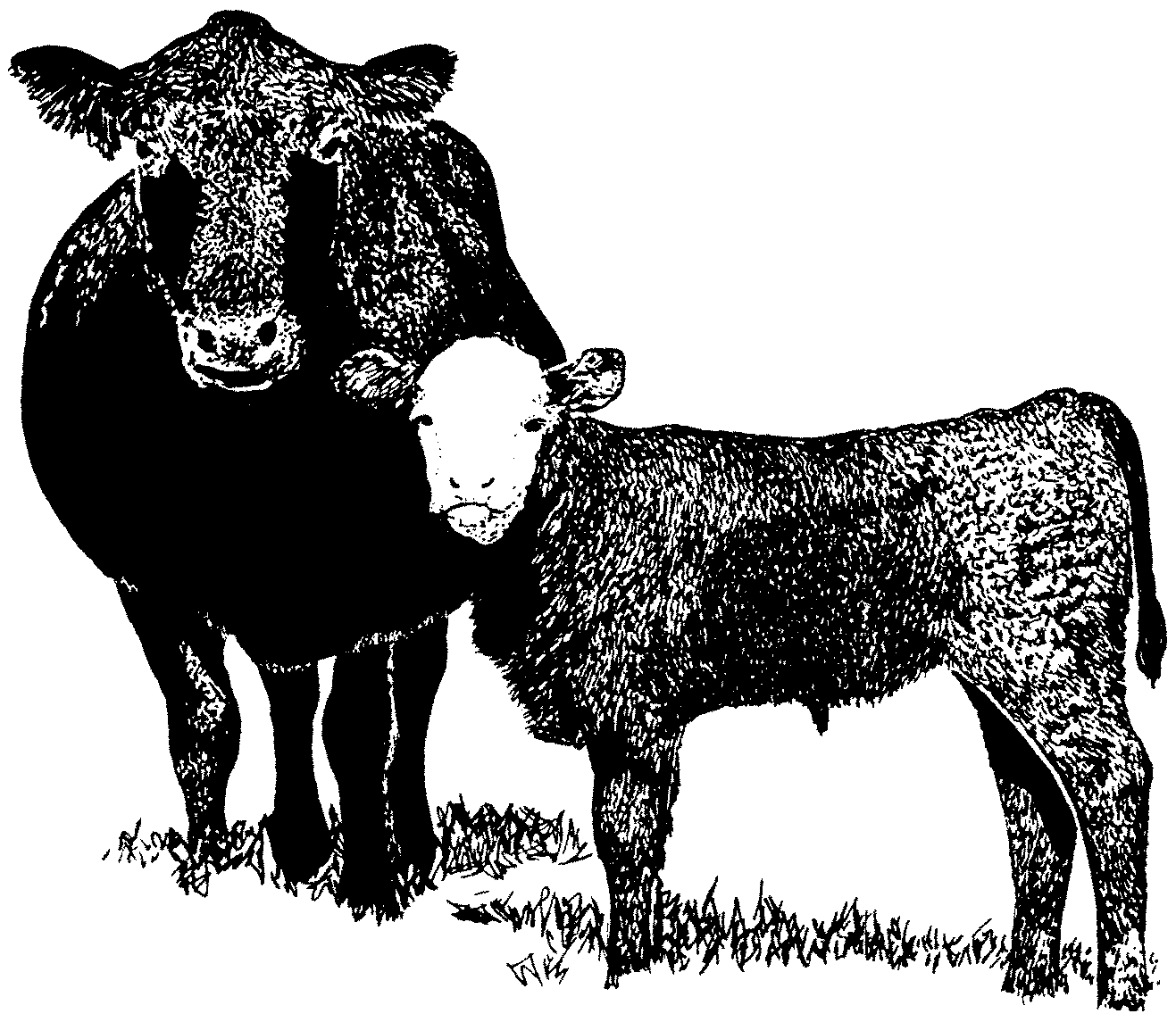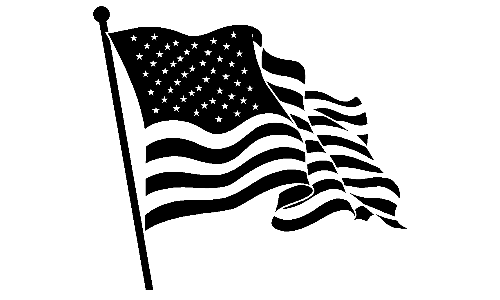Northeast Missouri Ag Connection Newsletter, June 2017
To send a message to an author, click on the author's name at the end of the article.
Northeast Missouri Ag Connection
Volume 4, Number 6 - June 2017
This Month in Ag Connection
This Month in Ag Connection | Ag Connection - Other Issues Online
Financial Measures-Even More Critical in Today's Ag Climate
Most experts are expecting prices to remain lower than they were in 2014 to 2016. This is due to the high stocks of grain and higher livestock numbers. Producers will need to take a close look at their farm business finances, especially younger and higher-leveraged producers. Granted, this is Missouri and while a weather disaster is never far away, it would take a nationwide drought to bring back the higher prices. This article will discuss the most critical financial measures producers should consider. These measures vary depending on which lender or farm financial standards are utilized.
- (1) Financial Statement/Balance Sheet is a financial record everyone should complete on a regular basis. There are three key items in better understanding farm business:
- (a) equity to asset ratio: This tells how much of the business is owned. As an example, $1,000,000 in total assets and $300,000 in liabilities calculates into an equity to asset ratio of 70% {700,000 divided by the 1 million}. An equity to asset ratio of 60% or higher is a good goal.
- (b) current ratio: This is a short term (usually one year or less) ratio to determine if liquid assets could pay all current obligations. It is determined by dividing total current assets by the total current liabilities. A ratio of 1.5 to 1 or higher is the goal.
- (c) track trends: Tracking trends over a 3 or 5-year period can tell a lot about the financial health of the business.
- (2) Profit and Loss/Income Statement is another financial report every farmer should be utilizing. A Schedule F will work if the producer does not complete a true profit and loss. Important things to monitor include:
- (a) rate of return on farm assets: This is determined by taking net farm income plus interest expense and divide by average total farm assets. Average total farm assets are beginning assets plus ending assets divided by two. The rate of return should be 4% or more.
- (b) rate of return on farm equity: This determines the return on owned assets in the business. It is determined by taking total farm income minus any operator management fee and divide by total farm equity. Five percent or higher is a strong figure.
- (c) operating profit margin: This is the rate of business capital turnover. To calculate, take the net farm income plus interest paid minus any operator management fee divided by gross farm revenue {gross, not net}. It should be at least 20% (5 year turnover) and 33% (3 year turnover) is even better.

- (3) Repayment Capacity is another area to consider, as it measures the producer's ability to cover all debt obligations on time.
- (a) term-debt coverage ratio: This ratio will determine if all debt payments can be covered within the year. This one is a little more complicated but is determined by net farm income plus gross non-farm income plus depreciation plus interest paid minus income tax expense minus family living expenses divided by scheduled principal and interest payments on term debt. (Put as a formula) Term debt is principal and interest payments plus any unpaid lease payments due in the next year. This figure should be 110% at a minimum.
- (b) capital replacement margin: This margin is not always considered. It is the amount of money left after paying all bills (operating expenses, family living, taxes) that can be used to purchase capital items such as breeding livestock and machinery. A farm business can go without replacing these capital items for a year or two but must have some money to replace them in the longer term.
- (4) Financial Efficiency is the last group to discuss. This tells how efficient the operation is which can help determine if the business is in good shape for the long haul
- (a) operating expense ratio: This ratio shows how much of your farm income is used to pay operating expenses minus principal and interest. This varies some by the type of farming operation but 60% to 70% is good. Backgrounding cattle operations will run closer to 80%, however.
- (b) interest expense ratio: This ratio shows how much of gross income is used to pay for borrowed capital. Under 10% is good, anything over 20% is a cause for concern.
- "I am experienced enough that I went through the farm crisis of the 1980's and while I'm not suggesting we are there yet, these are things you should know about your business and determine how healthy it is." University of Missouri Extension Agricultural Business Specialists can assist in determining these or can help using FINPACK, a financial analysis software program.
This Month in Ag Connection | Ag Connection - Other Issues Online
Custom Rate Guide - Updated
Guide 302, Custom Rates for Farm Services in Missouri, has been updated for 2016 figures. It is one of the most requested guides and can be printed online at: https://tinyurl.com/mo2016custom
Source: Joe Koenen, Ag Business Specialist
This Month in Ag Connection | Ag Connection - Other Issues Online
Shortening the Postpartum Interval
Multiple studies have concluded shortening the breeding and calving seasons will pay off in heavier and more uniform groups of calves to sell at weaning time. 2010 data from Oklahoma Beef Quality Network sales indicate if a cow operation can market a sizeable number of calves together in one lot, they will realize a greater price per pound (on the average) than similar calves sold in singles or small lots. A premium for uniform, multiple head lots is generally associated with the convenience of filling orders for cattle of a specified description on the part of an order buyer. Premium price per cwt rises rapidly as lot size increases from singles or doubles and tends to flatten out as they reach 50-60 head.

Using reproductive best management practices can increase calf value; however, these reproductive management strategies can also affect profitability on the cow side. Integrated Resource Management (IRM) data shows one of the biggest indicators of herd profitability in a beef cow herd is a high percentage of calves born in the first 21 days of the calving season. A cow who calves in the first 21 days for her production life will have the equivalent of 1.5 to 2 more calves, due to additional weight gained by earlier born calves. Additionally, cows calving in the first 21 days of the calving season are 30% more likely to have a calf the following year compared to cows that calve past 100 days into the calving season. For those producers who feed out their cattle, data also shows that calves born early in the calving season, on average, will grade a higher percent choice than their later born counterparts.
Utilizing Timed AI is a proven method to increase the percentage of calves born in the first 21 days of calving season. However, even if artificial insemination is not used, several estrus synchronization protocols can be practical in shortening the breeding and subsequent calving season.
Source: Zac Erwin,, Livestock Specialist
This Month in Ag Connection | Ag Connection - Other Issues Online
Garden Tips for June
Ornamentals
- Watch for bagworms feeding on many garden plants, but especially juniper and arborvitae
- Deadhead bulbs and spring flowering perennials as blossoms fade
- Thin seedlings to proper spacing before plants crowd each other
- Apply organic mulches as the soil warms. These will conserve moisture, discourage weeds, and enrich the soil as they decay
- Most houseplants moved outside prefer a bright spot shaded from afternoon sun. Check soil moisture daily during hot weather
- Rhizomatous begonias are not just for shade. Many varieties, especially those with bronze foliage, do well in full sun if given plenty of water and a well-drained site
- Apply a balanced rose fertilizer to roses after the first show of blooms is past
- When night temperatures stay above 50 degrees, move houseplants outdoors for the summer
- Apply a second spray for borer control on hardwood trees
- Plant tropical water lilies when water temperatures rise above 70 degrees
- Trees and shrubs may still be fertilized before July 4th
- Softwood cuttings can be taken from trees and shrubs as the spring flush of growth is beginning to mature
- Pruning of spring flowering trees and shrubs should be done after flowering
- Continue spraying roses with a fungicide to prevent black spot disease
Vegtables
- Repeat plantings of corn and beans to extend the harvest season
- As soon as cucumber and squash vines start to "run," begin spray treatments to control cucumber beetles and squash vine borers
- Plant pumpkins now to have Jack-O-Lanterns for Halloween
- Early detection is essential for good control of vegetable pests. Learn to identify and distinguish between pests and beneficial predators
- Stop harvesting asparagus when the spears become thin
- Start seedlings of broccoli, cabbage and cauliflower. These will provide transplants for the fall garden
- Soaker hoses and drip irrigation systems make the most efficient use of water during dry times
- To minimize diseases, water with overhead irrigation early enough in the day to allow the foliage to dry before the nightfall
- Set out transplants of brussels sprouts started last month. These will mature for a fall harvest
- To maximize top growth on asparagus, apply two pounds of 12-12-12 fertilizer per 100 sq. feet, water well and renew mulches to conserve moisture
- Control corn earworms. Apply several drops of mineral oil every 3 to 7 days once silks appear. Sprays of bacillus thuringiensis (B.T.) are also effective
Fruits
- Oriental fruit moths emerge. Most serious on peaches where first generation attacks growing tips. Shoots will wilt. These should be pruned out
- Thinning overloaded fruit trees will result in larger and heathier fruits at harvest time. Thinned fruits should be a hands width apart
- Enjoy the strawberry harvest
- Renovate strawberries after harvest. Mow the rows; thin out excess plants; remove weeds; fertilize, and apply mulch for weed control
- Summer fruiting raspberries are ripening now
- Begin control for apple maggot flies
- Spray trunks of peach trees and other stone fruits for peach tree borers
- Train young fruit trees to eliminate poorly positioned branches and establish proper crotch angles
Turfgrass
- Water turf as needed to prevent drought stress
- Mow lawns frequently enough to remove no more than one-third total height per mowing. There is no need to remove clippings unless excessive
- Mow bluegrass at 2 to 3.5 inch height. Turfgrasses growing in shaded conditions should be mowed at the higher recommendations
Source: Jennifer Schutter,, Horticulture Specialist
This Month in Ag Connection | Ag Connection - Other Issues Online
MDC Asks Public Not to Plant Invasive Bradford Pear Trees
The invasive Bradford pear tree can cause problems for Missouri native plants and animals. The Missouri Department of Conservation (MDC) encourages homeowners and landscapers to avoid planting Callery pear trees this spring. Better known as Bradford pears, the Callery pear tree is an invasive species known to multiply quickly and crowd out Missouri native plants. While it has been a popular landscaping tree for decades, cultivated forms have spread aggressively throughout the state.
'Different varieties of Bradford pear trees were planted close to each other, which allowed them to cross pollinate and take over natural areas," said Forestry Field Program Supervisor Russell Hinnah. "But they're also a poor landscaping choice because they don't do well in storms, often losing limbs or splitting apart." Stopping the spread means selecting alternate trees for yards and forested property. "The best plan is to select a native species to Missouri, and there are several great options," said Hinnah. "Serviceberry trees produce similar showy white blooms in the spring and have small red fruits that attract wildlife." Eastern redbuds and Missouri's state
tree, the flowering dogwood, are also good alternatives. The redbud tree grows quickly with eye-catching lavender flowers in the spring. Dogwoods do best in shady areas but can be somewhat difficult to grow.
To learn more about native trees that are great for landscaping, visit MDC's website at https://mdc.mo.gov/trees-plants/tree-care
"Missouri's Urban Trees" booklet http://short.mdc.mo.gov/ZwB is a great guide for finding the right tree for the right place.
Source:Missouri Department of Convservation

Remember to fly your USA flag proudly on June 14th for National Flag Day




